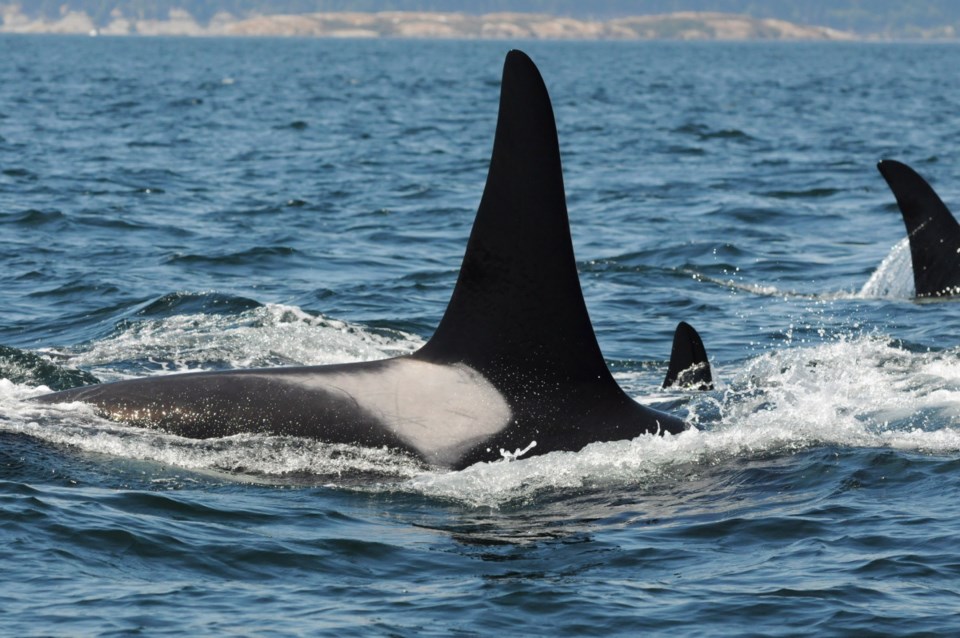The recent appearance of two dead whales off Vancouver Island — one infant and one young adult — has whale researchers concerned about the population.
Of the two, researchers are mostly worried about the death of the adult, a male known as L95, which at 20 was just entering prime breeding age. The death of the calf, a female about two weeks old, is not unusual.
John Ford, whale research scientist with the Department of Fisheries and Oceans, said the loss of any adult of breeding age is worrisome, with the overall population of southern resident killer whales down to about 82.
“The males, once they reach 20, become the breeding males in a population,” Ford said from Nanaimo. “So losing an animal of that age is not a good thing.”
DFO researchers found the male floating dead on March 30 off Nootka Island on the west coast of the Island. It was towed to shore. The animal was already well decomposed and a necropsy has not definitively determined a cause of death. Further results are expected in three to four weeks.
The only clue to the animal’s death was its enlarged spleen and advanced peritonitis, inflammation of the membrane lining the body cavity.
Ford said, however, that it’s common to find peritonitis on whale carcasses.
The calf was found near Sooke on March 23. There was no obvious cause of death, but Ford said it’s believed as many as 40 per cent of baby orcas die within the first six months of life.
Scientists studying orcas categorize the animals by their living and feeding habits. Those that eat fish, usually salmon, reside in a specific territory and are called “residents.” Those that move up and down the coast, feeding mostly on seals and other marine mammals, are called “transients.”
Some 300-odd northern resident whales live off Alaska and the northern part of B.C. The transients are believed to also number about 300.
The smaller-in-numbers southern residents range from the Salish Sea to as far south as California, and are now listed as endangered by Canadian and U.S. authorities.
These 82 animals live in three groups, or pods, called J-, K- and L-Pods. The recently found dead male was from L-Pod and identified as L95 because of a wound in the dorsal fin, left from when the animal was implanted with a satellite tag for research purposes.
The animal’s death has now refuelled a controversy in the U.S. over tagging.
Ken Balcomb, senior research scientist at the Center for Whale Research on San Juan Island, Washington, said the animal was tagged in February and even then, researchers could see it was thin.
Shooting a tag with a gun into the whale’s fin could only have stressed the animal, which was already showing signs of weakness or starvation, he said.
Balcomb said many of the southern residents are showing signs of hunger because of lack of prey resources, and L95 was no different.
“This guy was not in great condition,” he said. “He should not have been tagged and it probably stressed him.”



